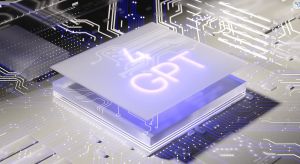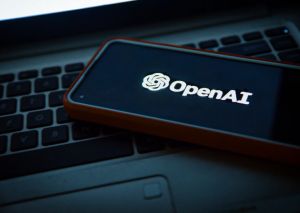Test Owner
As the demand for generative AI technology continues to rise, industry giants, including Microsoft, Google, AWS, and OpenAI, are exploring the development of their own custom chips tailored for AI workloads. Contrary to popular belief, the primary driver behind this push isn't chip shortages but rather a strategic shift toward optimizing the efficiency and cost-effectiveness of processing generative AI queries.
Speculation has swirled around efforts by OpenAI and Microsoft to develop custom chips for handling generative AI tasks, with Microsoft collaborating with AMD on a project codenamed Athena and OpenAI rumored to be eyeing potential acquisitions to bolster its chip-design capabilities. In the meantime, Google and AWS have already introduced their own chips for AI workloads in the form of Tensor Processing Units (TPUs) for Google and AWS' Trainium and Inferentia chips.
So, what's motivating these companies to delve into custom chip development? Analysts and experts point to two key factors: the cost of processing generative AI queries and the efficiency of existing chips, primarily Graphics Processing Units (GPUs). Currently, Nvidia's A100 and H100 GPUs dominate the AI chip market, but their efficiency in handling generative AI workloads is under scrutiny.
Nina Turner, a research manager at IDC, notes that GPUs may not be the most efficient processors for generative AI tasks, and creating custom silicon could potentially address this efficiency issue. GPUs, while highly effective for matrix inversion, a fundamental mathematical process in AI, are costly to operate. The pursuit of silicon processors optimized for specific AI workloads could help alleviate cost-related concerns.
Custom silicon, according to Turner, has the potential to reduce power consumption, improve compute interconnectivity, and enhance memory access, ultimately lowering query costs. For instance, OpenAI's operation cost for ChatGPT is roughly $694,444 per day, which translates to 36 cents per query, based on a report from research firm SemiAnalysis.
Furthermore, custom silicon provides the advantage of exerting control over chip access and designing elements tailored specifically for large language models (LLMs), thereby enhancing query speed.
This shift towards custom chip design is likened to Apple's approach to producing chips for its devices, where specialization trumps general-purpose processors. Despite the popularity of Nvidia's GPUs, they, too, are considered general-purpose devices. Custom chips could be the answer to optimizing performance for specific functions, such as image processing and specialized generative AI.
However, experts caution that developing custom chips is no easy feat. It involves significant challenges, including high investment requirements, lengthy design and development timelines, complex supply chain issues, a scarcity of talent, and the need for a sufficient volume of production to justify the expenditure.
For companies embarking on this journey from scratch, the process can take a minimum of two to two and a half years, with the scarcity of chip design talent causing delays. Several large tech companies have mitigated this challenge by either acquiring startups with expertise in chip development or partnering with experienced firms in the field.
Despite ongoing discussions about chip shortages, experts believe that the move towards custom chip development by companies like OpenAI and Microsoft is more about addressing inference workloads for LLMs, particularly as Microsoft continues to incorporate AI features into its applications. It appears that these companies have specific requirements that aren't met by existing solutions, and a specialized chip for inference workloads, which is more cost-effective and efficient than large GPUs, may be the solution.
Acquiring a major chip designer may not be a cost-effective approach for OpenAI, given the substantial expenses involved in designing and producing custom chips. Instead, experts suggest that OpenAI could explore the acquisition of startups with AI accelerators, a more economically viable option.
To support inferencing workloads, potential acquisition targets could include Silicon Valley firms like Groq, Esperanto Technologies, Tenstorrent, and Neureality. Additionally, SambaNova might be a suitable candidate if OpenAI is willing to transition away from Nvidia GPUs and adopt an on-premises approach, moving beyond a cloud-only paradigm.
In the fast-paced world of technology and user experience (UX) design, trends and paradigms are constantly evolving. Just a few years ago, it seemed like we were in the midst of a "Golden Age" of UX, where design thinking and user-centered approaches were at the forefront of innovation. However, as we move further into the 21st century, some experts argue that the Golden Age of UX may be over, and we're entering a new era – the post-design era. In this article, we will explore this intriguing notion and what it means for the future of UX.
The Golden Age of UX
The Golden Age of UX, often associated with the early to mid-2010s, was marked by a heightened focus on user-centered design. During this period, businesses realized the importance of creating products and services that not only functioned well but also offered exceptional user experiences. Companies like Apple, Google, and Airbnb led the charge, setting the standard for intuitive interfaces and seamless interactions.Design thinking, a problem-solving approach that prioritizes empathy for the end-user, gained immense popularity. It was embraced not only by design professionals but also by executives and leaders across various industries who recognized its potential to drive innovation and customer satisfaction.Furthermore, advancements in technology, such as responsive web design and mobile apps, provided new opportunities for designers to create engaging and accessible experiences. It seemed that the UX community was in its prime, with design taking center stage in the business world.
The Post-Design Era
However, as the digital landscape has matured and design principles have become more widely adopted, some argue that we have entered a new era – the post-design era. What exactly does this mean?
Design as a Given: In the post-design era, good design is no longer a competitive advantage; it's an expectation. Users now assume that the products and services they interact with will be well-designed and easy to use. As a result, design becomes a baseline requirement, rather than a standout feature.
Integration of AI and Automation: The rise of artificial intelligence and automation has changed the way we think about UX. Machine learning algorithms can predict user behavior and adapt interfaces accordingly. Automation streamlines processes, reducing the need for traditional design interventions. This shift challenges designers to find new ways to add value beyond the automated aspects of UX.
The Evolution of User Expectations: Users today have higher expectations than ever before. They demand personalized experiences, instant gratification, and products that seamlessly integrate into their lives. This necessitates a shift in focus from traditional design aesthetics to the creation of holistic, end-to-end experiences.
Cross-disciplinary Collaboration: The post-design era emphasizes collaboration between designers and professionals from diverse fields, such as psychology, data science, and engineering. To create truly exceptional user experiences, designers must work in tandem with experts who can provide insights into user behavior, cognitive processes, and emerging technologies.
While it's tempting to proclaim that the Golden Age of UX is over, it's more accurate to say that UX design has evolved. The principles of user-centered design and design thinking remain essential, but they are no longer the sole focus. We now live in a world where good design is expected, and designers must continually adapt to new challenges and technologies.The post-design era presents exciting opportunities for UX professionals to innovate, collaborate, and push the boundaries of what's possible. While the landscape may have changed, the importance of creating meaningful and user-centric experiences remains as critical as ever. UX designers who embrace this evolution will continue to play a vital role in shaping the digital future, even if the "Golden Age" is behind us.
In the ever-evolving landscape of data collection and artificial intelligence, a notable trend is emerging: websites are increasingly implementing measures to restrict OpenAI from scraping their content. This development has raised important questions about data privacy, the protection of intellectual property, and the evolving relationship between web scraping and website owners.
The Proliferation of Web Scraping
Web scraping, the automated process of extracting data from websites, has become a vital tool for various applications, from data analysis and market research to content aggregation and price tracking. OpenAI, known for its cutting-edge AI technologies, has leveraged web scraping to gather and analyze vast amounts of data from the internet to train its AI models.
The Concerns Arising from OpenAI's Web Scraping
While web scraping offers undeniable advantages, concerns have arisen regarding its implications for website owners and content creators. Some of the primary concerns include:
- Data Privacy: Web scraping can potentially access and collect sensitive user data, leading to concerns about privacy violations.
- Intellectual Property: Content creators and website owners worry about the unauthorized use of their copyrighted material or proprietary information.
- Server Load: Aggressive web scraping can increase server load, leading to slower website performance and increased hosting costs.
Website Responses to OpenAI Web Scraping
In response to these concerns, many websites have taken action to prevent OpenAI and other web scraping activities. Some of the methods employed by websites include:
- Robots.txt: Websites often use the "robots.txt" file to communicate with web crawlers and explicitly specify which parts of their site can be scraped and which cannot.
- CAPTCHA and Rate Limiting: Websites may employ CAPTCHA challenges and rate limiting to deter automated scraping bots.
- IP Blocking: Websites can block access from IP addresses associated with known web scrapers or excessive traffic.
Balancing Act: Protecting Interests
The tension between web scraping and website owners underscores the importance of finding a balance between data collection for legitimate purposes and respecting the rights and interests of website owners. Here are some key considerations:
- Transparency: Web scrapers should be transparent about their intentions and comply with website-specific rules, such as those outlined in the robots.txt file.
- Data Privacy: Web scrapers must prioritize data privacy and ensure that they are not collecting personal or sensitive information without consent.
- Ethical Scraping: Ethical web scraping practices involve collecting data responsibly and only for legitimate purposes, such as research, without causing harm to websites.
The Future of Web Scraping
As technology and regulations continue to evolve, the future of web scraping remains dynamic. Innovations like AI-powered content generation, improved data accessibility, and evolving legal frameworks will shape the landscape.
In conclusion, the growing trend of websites blocking OpenAI's web scraping reflects a complex and evolving relationship between data collectors and data providers. As stakeholders work to strike a balance between legitimate data collection and respecting the rights of website owners, a responsible and ethical approach to web scraping will be crucial to navigate these challenges successfully.
Sweden has long been at the forefront of aerospace technology and innovation. With a rich history in aviation dating back to the early 20th century, the country has been home to some of the most advanced aerospace companies in the world. In recent years, Sweden has continued to invest in this vital industry through the 2021-25 Bill, which seeks to bolster the nation's aerospace capabilities and maintain its position as a global leader.
The 2021-25 Bill is a government initiative that outlines Sweden's strategic priorities and funding allocations for the next four years. It includes a significant investment in the aerospace sector, with a particular focus on research and development. The goal of this investment is to strengthen the industry's competitiveness, increase its contribution to the Swedish economy, and promote sustainable growth.
One of the key components of the 2021-25 Bill is the establishment of the Aerospace Technology Centre, which will serve as a hub for research and development in the field of aerospace. The centre will bring together academia, industry, and government to collaborate on cutting-edge projects, develop new technologies, and train the next generation of aerospace professionals.
The Aerospace Technology Centre will focus on several priority areas, including propulsion, materials science, autonomous systems, and space exploration. These areas are critical to the advancement of the aerospace industry and will play a vital role in shaping its future. By investing in these priority areas, Sweden is positioning itself as a leader in the global aerospace market and laying the foundation for continued growth and innovation.
In addition to the Aerospace Technology Centre, the 2021-25 Bill also includes funding for several other initiatives aimed at supporting the aerospace industry. These include investments in infrastructure, such as airports and research facilities, as well as support for small and medium-sized enterprises (SMEs) in the sector. The bill also prioritizes the development of sustainable aviation technologies, such as electric and hybrid aircraft, which will play a crucial role in reducing the industry's environmental impact.
Sweden's commitment to the aerospace industry has already yielded significant benefits for the country. According to a report by the Swedish Federation of Business Owners, the industry contributes over SEK 100 billion ($11.7 billion) to the Swedish economy each year and employs around 15,000 people. With the 2021-25 Bill, the government hopes to build on this success and create even more opportunities for growth and innovation.
In conclusion, Sweden's continued investment in the aerospace industry through the 2021-25 Bill demonstrates the country's commitment to maintaining its position as a global leader in this vital sector. By prioritizing research and development, infrastructure, and sustainability, Sweden is laying the groundwork for continued growth and innovation in the years to come. As the industry continues to evolve and face new challenges, Sweden's investment will be critical in ensuring that it remains at the forefront of this exciting and dynamic field.
Related to that take off, Inter-Consulting is looking for Swedish nationasls for various defence engineerings roles such as :
- Catia V5 design engineers
- CREO design engineers
- NX design engineers
- Electrical engineers
- Chassis design engineers
- Mechanical design engineers
- Inventor skills
- Vehicle system
- Power electrical system
- Electronic architect
- CAE engineers
- Aerospace design engineers
- Quality Assurance engineers
- Technical Project Manager
- Physical testing Verification engineers
- Power electrical engineers
- Hardware testing engineers
- Embedded software engineers
- NVH testing engineers
- Software Developers
- Devops engineers
- Functional Safety engineers
- HULL design engineers
- Aero jet design engineers
- Submarines engineers
- Program manager
The AI tool, ChatGPT, has become a popular topic of discussion worldwide due to its versatility and efficiency. Since its launch on November 30th, 2022, ChatGPT has proven to be a reliable tool for completing complex tasks and making them simpler. Whether it involves cracking the UPenn Wharton MBA exam, writing admission essays for Ivy League schools, or completing basic tasks such as writing emails, posts, recipes, and more, ChatGPT can handle them all. However, there are certain professions that require traits such as creativity, empathy, critical thinking, and human interaction, which AI cannot replace.
The advanced technology of OpenAI-powered ChatGPT and the recently launched GPT-4 has created fear among people, especially IT professionals who are already experiencing mass layoffs. This has raised the question of whether ChatGPT will replace programmers and other IT professionals.
The ongoing competition among AI chatbots such as ChatGPT, Google's BARD, Microsoft's Bing, ChatSonic, and China's Baidu App-powered Ernie has increased the fear of job loss or replacement among IT professionals. In 2023 alone, 503 tech companies worldwide have laid off 1,39,165 employees, and the rise of the AI chatbot era has contributed to a certain percentage of this ongoing tech layoff.
A recent Goldman Sachs report predicted that 300 million jobs are at risk of being replaced or becoming obsolete. The report also stated that 4% of jobs in Europe and 25% of jobs in the US could be automated. With this in mind, the fear among IT professionals regarding the replacement of their jobs by advanced AI technology is valid.
AI has certainly helped to unburden many tasks and simplify workloads, but even with advanced technology, there are still some job roles that AI won't be able to replace so easily in the current and future scenario. Here are 7 IT jobs that AI can't replace:
- Prgrammers: While AI can assist in coding to a certain degree, creating complex code is still beyond its range. Programmers use AI as their assistance, but the major work needs to be done by them manually. Junior developers/SDE-1 can get replaced by AI for easier tasks, but programmers are safe as long as they upgrade their skills, understand the client and business's requirements, debug code, plan how the software should work, find and fix mistakes, test software, and improve it based on feedback.
- Hardware Technicians: While AI can provide suggestions and recommendations for hardware issues, it cannot physically repair or replace hardware components. A hardware technician diagnoses and repairs problems with computer components, such as CPUs, motherboards, and hard drives. To fix issues and ensure that the computer runs properly, they often work with specialized tools and equipment.
- Cybersecurity Analysts: AI can assist cybersecurity analysts in identifying and responding to potential threats, but it cannot replace them. Cybersecurity analysts analyze and respond to cyber threats, such as hacking attempts, viruses, and malware.
- Data Analysts: AI can assist data analysts in processing and analyzing data, but it cannot replace them. Data analysts collect, process, and perform statistical analyses of data to identify trends and insights.
- Technical Writers: AI can assist technical writers in generating reports and documentation, but it cannot replace them. Technical writers create and edit technical documentation, such as user manuals and training material
- Network Administrators: AI can assist network administrators in managing and monitoring networks, but it cannot replace them. Network administrators install, configure, and maintain computer networks and ensure network security.
- Web Developers: AI can assist web developers in designing and building websites, but it cannot replace them. Web developers create and maintain websites and web applications, ensuring they function properly and meet user needs.
- In conclusion, while AI can assist in many tasks, it cannot replace the skills and expertise of human workers in many IT job roles. Upgrading skills and focusing on tasks that require creativity, critical thinking, empathy, and human interaction can help workers stay relevant and secure in their jobs.
On 4 April, cloud services provider AWS welcomed more than 9,000 people to the Palais des Congrès in Paris for its annual event, AWS Summit. It was an opportunity to review the investments made in France and the desire to expand in Europe. The cloud giant also announced the launch of two programmes aimed at start-ups.
Amazon Web Services (AWS) was present in Paris on 4 April to give an update on its cloud solutions and to highlight its customers and partners. The American provider is making a comeback with its Summit 2023. Julien Groues, country manager of AWS France and Italy, launched the day with a keynote speech in which various customers spoke about their migration to AWS tools. For the occasion, Mai-Lan Tomsen Bukovec, VP of Technology AWS was also present in front of more than 9,000 people (8,000 entries were registered in 2022). During this morning, the testimonies were multiplied. Alix Boulnois, chief digital officer of Accor and Cédric Lewandowski, executive director and director of the nuclear and thermal park of the EDF group, spoke about the reasons that led these two large French companies to adopt AWS solutions.
Other companies also shared their feedback, from a distance. These included Air Liquide, Compagnie des Alpes, eTF1 and more recent companies such as Hugging Face, Mano Mano, Metron and Swile. The objective is clear for the cloud giant: to remind people of the extent to which it is everywhere, in all sectors of activity and with ever more varied use cases. "AWS in France represents 6 billion euros of investment over the 2017-2031 period. More than 80% of the CAC40 and more than 75% of the Next40 are customers," says Julien Groues. To date, the firm has no less than 1,000 employees spread between Bordeaux, Lille, Lyon, Nantes, Paris and Toulouse and claims to have trained more than 100,000 people in the cloud.
Europe, a rapidly expanding market
At European level, the figures speak for themselves: 42% of EU companies use the AWS cloud. Defining itself as "competitive, secure and sustainable", it is not afraid to ride the green trend that is taking hold of the continent to be more attractive. "We are working hard to build a sustainable infrastructure. This includes the energy we consume. 95% of the electricity we use in Europe for our data centres is from renewable sources. Praising the savings that companies can make by switching to the cloud - in the order of "30% on average" - Julien Groues took advantage of the event to make a subtle announcement: the launch of the European Defence Accelerator for start-ups.
In its press release, the company said that "the aim of this accelerator is to support start-ups with AWS technologies to deliver energy resilience, secure information sharing, sensing and decision-making, quantum and cyber resilience solutions to support a range of customer needs"In the sights, it is the Defence and National Security sector that is obviously the end customer. In detail, the accelerator is open to start-ups from all over the world who want to do business with defence and national security organisations across Europe. The four-week programme offers a combination of technical support (including the provision of the vendor's cloud technologies), commercial support (including go-to-market advice and investment guidance) and mentoring, all in partnership with Plexal, a UK government-backed IT company. Around 15 start-ups will be selected after demonstrating the existence of customers and revenues and the ability to use AWS cloud services to solve the challenges of defence and national security missions. Applications are open until 1 July 2023.
AI is not left out
AWS has understood that artificial intelligence is on the rise, and even more so the generative version. Even though it has been working on AI and machine learning for years, it wants to stay one step ahead of the growing number of competing solutions. To this end, the firm today announced a Generative AI Accelerator, a programme aimed at helping early-stage start-ups in the generative AI sector in their development. Over the course of 10 weeks, founders of these companies will undergo a programme on go-to-market strategies tailored to generative AI, machine learning stack optimisation, and will also have access to the latest AI models and tools. Applications for the programme are open from today and will be accepted until 17 April.
No-Code: lots of promises...and limits
No-code accelerates development while greatly reducing costs. What are the eligible use cases? Which companies use this approach? What are the obstacles to overcome? Here are some answers.
No-code is set to reshuffle the deck in development. By avoiding the use of traditional computer languages, this approach makes it possible to develop websites and web applications up to three times faster, at a cost that is at least halved.
No code is one of the answers to the shortage of developers and the desire to reduce the "time to market", a key factor in the development of new products.
"time to market", a key factor in digital transformation. It also contributes to the digitalisation of small and medium-sized businesses with limited budgets.
According to the research firm Gartner, 80% of technological products and services could be designed by non-computer scientists by 2024. From a 100% graphical interface, a
From a 100% graphical interface, a "maker" or "product builder" assembles pre-parameterised functional bricks in the manner of a Lego, establishes the workflow of the future solution, then links it to a database.
In itself, the desire to create applications using as little code as possible is not new. The phenomenon goes back a few decades with integrated development environments (IDEs) and software engineering workshops such as Microsoft's Visual Basic or WinDev.
How, then, can we explain the explosion of no code? For Maxime Topolov, co-founder of the code.store agency, "the phenomenon benefits from the multiplication of APIs allowing front end applications or dashboards to interact with the company's applications and data.
No-code: filling the gaps in CRM
What are the eligible use cases? From simple spreadsheets to custom CRM and business process automation, the spectrum is wide.
In the field of customer relationship management or e-commerce, there are many vertical niches that are not completely covered by market solutions such as Salesforce or HubSpot," continues Maxime Topolov. The no-code will, for example, allow a barber to have a dedicated CRM.
One of the first no-code projects that Christelle Curcio, co-founder and chief makers officer of the Alegria group, worked on was also a CRM for a law firm.
"The idea was to determine the three most relevant prospects to invite to lunch during the month. No software on the market answered this question.
The no-code also makes it possible to overcome the functional shortcomings of business software packages and other ERPs.
"To fill in the gaps in the data, operational staff use Microsoft Excel or Google Sheets," notes Maxime Topolov.
Christelle Curcio agrees. "An off-the-shelf solution does not cover 100% of a company's needs and the company only really uses 10% of its functionalities. The publisher follows its product roadmap and cannot afford to do customisation.
The use of no-code also favours the automation of all manual processes, particularly in the support functions of finance, marketing, communication, IT or HR. For example, a company will have a tool for booking meeting rooms or an internal workflow for validating expense reports.
"This allows both productivity gains and the release of energy by relieving employees who were carrying out these repetitive and time-consuming tasks," observes Christelle Curcio.
Maxime Topolov cites as another example the case of an application developed to manage breakfasts within a hotel chain. "Instead of printing out an A4 sheet every morning and crossing out the names of the guests present, the hotel staff use a tablet. The guest's name and room number are automatically transferred from the ERP system.
Co-founder and CEO of Cube, Pierre Launay started working with Airtable and Make (formerly Integromat) precisely because he wanted to maximise the processes of his agency. "I quickly saw the value of these tools. Once you've had a taste of no code, you try to optimise all the low value-added tasks such as reconciling an invoice and a quote.
He also believes that no-code can be used to test a new market's appetite for a product or service. He cites the case of the temporary employment agency Gojob, which wanted to export its model. "It was quickly able to see that the American market responded favourably to its offer, but not the British market. More generally, Christelle Curcio believes that the no-code culture frees up the potential for creativity. "How many times have I heard: if I knew how to code, I would do a lot of things? As a trained designer, I was personally frustrated by having to stop at the mock-up stage. Today, I can go to the end of my ideas without depending on the IT department. In this sense, the no-code represents, in his eyes, a real technological and societal revolution. "Engineers are no longer the only ones to govern the digital world. Everyone can become an actor in their digital life. However, no-code is not intended to replace hard coding, but to complement it. There will always be a need for traditional developers, if only to maintain critical systems such as ERP, based on a strong legacy.
Setting a governance framework
Today, it is advisable for a company to establish rules of governance. Which projects are eligible or not for low code-no code, depending on the existing situation and the level of integration with the information system?
To answer this question, the Colas Group has set up a dedicated centre of excellence and opened a development factory dedicated to low code-no code alongside those for the PHP and . Net environments. At the same time, Colas is pursuing a policy to promote citizen developers, these business experts who, thanks to low code-no code, are able to create their own applications.
The world's leading construction company identifies employees who have designed applications used by more than one person in order to support them, guide them in their choices, but also make them aware of the risks. "When an application becomes critical, we need to be able to take it over centrally in order to maintain it in the event of the creator's departure or leave," says Jean-Michel Maillet.
A low-code-no-code project remains a project like any other with its quality and maintainability requirements.
The Californian publisher gives in to the temptation of generative AI. Einstein GPT combines Salesforce's proprietary AI for CRM with that of OpenAI. Its model is trained with public data, but companies can feed it with their own data.
Salesforce took advantage of its Trailblazer DX developer conference in San Francisco on 6 and 7 March to announce its generative AI. Einstein GPT is, as its name suggests, a combination of the editor's proprietary Einstein technology and ChatGPT-type models. The Californian company will enter into partnerships with various suppliers, starting with the best-known, OpenAI, the originator of ChatGPT, Dall-E and Whisper.
Salesforce has integrated Einstein GPT into its business applications for sales, service, marketing, sales and IT. The solution is already interfaced with Mulesoft, Tableau and Slack. For example, a sales team will use it to identify new prospects and relevant people to contact, whether or not they are already in the company's CRM. The AI will then suggest to the sales team that they start a conversation with their target by email, based on previous exchanges, among other things. Employees can directly edit these pre-written texts, but can also ask the AI to rewrite its messages in a lighter tone, for example. Unlike consumer AI such as chatGPT, interactions between "humans" and Salesforce's generative AI are integrated directly into the user interface of business applications,
A human in the loop
The trauma of cognitive bias in AI does not spare Salesforce. Clara Shih, corporate vice president and general manager of Service Cloud, was quick to quote the now hackneyed Spiderman line: "With great power comes great responsibilities". The Einstein GPT teams are working closely with the publisher's ethics department, without giving further details. Moreover, Jayesh Govindarajan, senior vice-president of AI and machine learning, has repeatedly stressed the importance of systematically keeping a "human in the loop". This is as much about ethics as it is about the ability to verify the ownership of the data used or the relevance of the results of queries sent to Einstein GPT.
Like OpenAI, Einstein GPT trains with public data. But not only that. It can also draw on databases that companies subscribe to. As Jayesh Govindarajan explained at the press conference, Einstein GPT will use "large language models (LLMs) such as GPT-3, applied to semi-public paid databases, such as weather for example". But above all, following on from Einstein, which has been available since 2016, it is a generative AI optimised for CRM that Salesforce has developed.
Training the model with the company's data
A company can therefore choose to train the AI with its own data from the Salesforce Data Cloud. This is a way of obtaining personalised content, adapted to the specific context of the company. "Customers can connect this data directly to OpenAI's advanced AI models or opt for another external model and use a natural language prompt directly from Salesforce CRM to generate content that can be adapted in real time to the increasingly changing behaviours of consumers," explains Salesforce in its press release.
Automatically supplementing developers' code
In addition to its business applications, Salesforce is also making its generative AI available to developers. According to the publisher, its AI will draw its knowledge from a company's "in-house" programming by training its model on the lines of code already written in the company. "The principle is the same as Google's auto-complete suggestions," noted Jayesh Govindarajan. Einstein GPT will offer the developer a portion of code to continue their programme.
The Californian also took the opportunity of its announcement to confirm the integration of ChatGPT into Slack (see below). "This app includes AI-based conversation summary creation, search tools on any and all, and message writing assistance." Finally, Salesforce is creating a new $250m Salesforce Ventures fund to support "generative AI startups and create a responsible ecosystem in the field".
E3D: the new face of PDMS from Aveva
45 years is a good age for a company. For its anniversary, Aveva is launching a new version of its PDMS plant design solution, combining innovation and continuity for a community of users who are not inclined to technological breakthroughs.
A company of engineers serving engineers
Everything3D (E3D) is the new face of PDMS, the plant design software developed by Aveva. The editor's flagship tool needed a serious facelift to bring it up to market standards. But it was a gentle facelift, as CTO Dave Wheeldon explains, "It's about innovation without technological disruption. Our customers need to maintain full data compatibility from one version to the next. They also need to be able to customise their solutions, integrate their own developments or off-the-shelf software, without calling in IT specialists. This is why the software is always based on the same proprietary database and design mechanisms. This is a must in an industry where projects are constantly growing in size and where the development time can be several years.
This is an obligation in an industry where projects are constantly growing in size and where the development time can be several years.
So, how does this change in continuity translate? During the presentation of its new software to the press, the editor remained particularly vague about the new features introduced in "E3D". It was the concept of "Lean" that was emphasised, with the corollary of the need for work teams to be able to communicate information on the progress of projects with each other, and this from anywhere in the world. Dave Wheeldon says, "It's about responding to three major trends that we're seeing with our customers, plant designers and operators, ship designers: the widespread use of cheap 3D acquisition systems, mobile computing and cloud computing. Techniques that allow operators on construction sites to send crucial information back to the design teams in real time via updates and laser-scanned data, allowing corrective action to be taken without running out of time. "We can add a sociological trend: the new expectations of young engineers with regard to the IT tools of their daily lives, more fun, ease of use and responsiveness," continues Dave Wheeldon.
Cloud, mobility and point cloud
On a practical level, we were able to glean some information. First and foremost, the software retains its relational database architecture, a provision that allows it to handle large projects with multiple stakeholders. To facilitate the use of point clouds used for maintenance or revamping operations, E3D has new as-design/as-built comparison tools. For example, Bubble View allows you to position yourself at a precise point in the model to visualise the point cloud with a high degree of precision, without necessarily using a specific point cloud processing tool. The point cloud can also be used for clash detection.
To facilitate collaborative work, the network aspect, check-in/check-out, caching of data on workstations, etc. have been optimised. Engineers can thus work simultaneously on the same project from different locations, with a gain in performance, but lower bandwidth. A system of tokens allows the company to use its licences as if it were an internal SaaS and therefore to distribute them dynamically according to its needs.
In terms of drawing, a major phase of development, Everything3D benefits from the integration of an AutoCAD clone and, in passing, a modern interface based on Windows 7 standards. Finally, with E3D, PDMS moves from an OpenGL graphics base to DirectX, which is more powerful.
On the cloud side, things are not set in stone. At the press conference, Aveva's technical director presented a 3D digital model of a factory on a Windows touchscreen tablet, with the possibility of moving around within it, but this was a prototype. Data hosting in the cloud? On the customer's server? Only downloaded to the tablet? Use of 4G? These are elements that will not be defined before the end of 2013 within a commercial solution. For the moment, E3D runs on the client's servers, but allows for the integration of a Cloud architecture.
OpenAI services come to Microsoft Azure
Microsoft has announced the availability of Azure OpenAI. It allows companies to integrate services such as GPT, Dall-E or Codex into their cloud applications. The highly publicised ChatGPT should arrive soon.
It was Satya Nadella, CEO of Microsoft, who announced in a blog the general availability of Azure OpenAI. It must be said that the subject is trendy with the recent media coverage of ChatGPT and the financial interest of the Redmond firm in the start-up. In concrete terms, Azure OpenAI has been in testing for a year and offers companies the opportunity to integrate OpenAI tools into their cloud applications.
Among these services, companies will be able to use GPT version 3.5, which is the generative AI engine used by ChatGPT and PowerBI. There is also Codex, the basis of Copilot, GitHub's code completion solution and Dall-E, an AI-based image generator. Among the uses, the Microsoft boss highlights some feedback from test customers such as Al Jazeera, which works with Azure OpenAI on content extraction, translation and topic scheduling. For its part, KPMG relies on the tool to make "significant gains" on its CSR tax system.
ChatGPT will arrive soon
However, ChatGPT is not yet included in the Azure OpenAI package. In his presentation Satya Nadella indicated that this service would arrive soon. Microsoft believes in the potential of the conversational assistant to the point of wanting to integrate it into several services such as the search engine Bing or in several programs of the Office suite (Word, PowerPoint and Outlook). At the Davos forum, the executive said that tools like ChatGPT are needed to boost productivity. "We need something that really changes the productivity curve, to have real economic growth," he said.
Lastly, the availability of the service is announced as general by Microsoft. But our colleagues at The Register have noted that the service is available in four American regions and one in Western Europe. It is likely that the announcement effect is spread over time on the deployment and that Azure OpenAI will be fully operational for all in a few days.














